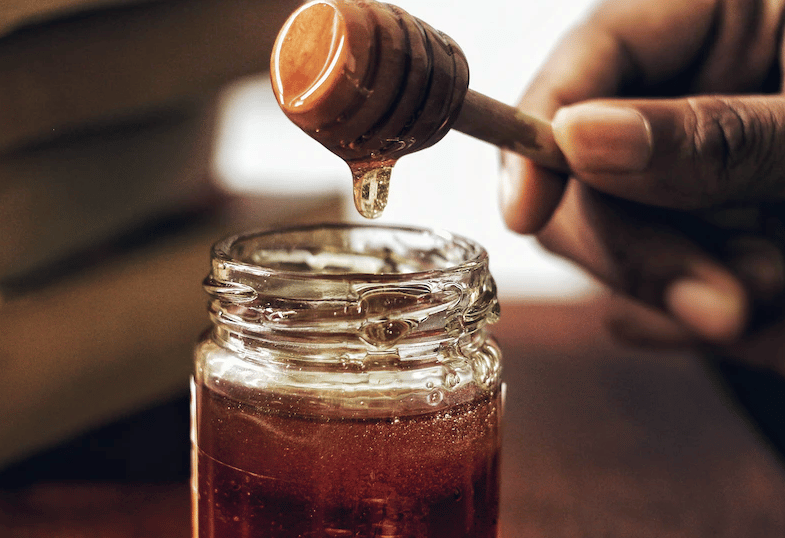Did you know of the existence of…”magic” honey?
Bears’ passion for honey is one of those curiosities that we have known about, since we were kids. And it is not a mere stereotype: these animals are really fond of it. But what if we told you that there is a honey capable of giving hallucinogenic effects as much to humans as to this animal species?
Recently, a video has been circulating on the web of a young bear in Düzce province (Turkey) in the grip of the effects of so-called “mad honey”, a particular rhododendron honey known in Turkey, its country of origin, as deli bal. The poor teddy bear in search of food surely came across this particular kind of honey, which had on him the real effects of intoxication, or rather, a hallucinogenic drug.
So what is deli bal? Does it actually have hallucinogenic properties? And if so, to what are they attributed?
It is a rhododendron honey native to Turkey namely Rhododendron ponticum subsp. ponticum. This variety of rhododendron, typical of the mountains above Turkey’s Black Sea coast, differs from that found in our territories in the presence of a substance called grayanotoxin, the name of which comes from the plant in which it was discovered, Leucothoe grayana, native to Japan. Grayanotoxins are a group of toxins found in some plants in the Ericaceae family, including azaleas, rhododendrons and other plants. In addition, different species of rhododendron may contain different types of grayanotoxins in different amounts. This explains, at least in part, the differences in toxicity among these plants. In spring, when bees collect nectar from these flowers, the toxin ends up in honey, thus passing all its properties to it.
This toxin stimulates sodium channels in human neurons for a prolonged time and this is the cause of his effects on the body.
In fact, deli bal was often used for its medicinal properties. Researchers have determined that a single teaspoon of mad honey is capable of causing a lowering of blood pressure and a change in heart rate. In Turkey this type of honey was, and still is, in fact, used as a naturopathic remedy to treat the symptoms of hypertension. However, an overdose can have undesirable effects on the nervous, circulatory and digestive systems.
Common symptoms include nausea, vomiting, diarrhea, altered consciousness, some cardiovascular effects such as arterial hypotension (low blood pressure) and various heart rhythm disturbances, diplopia (double vision) and blurred vision, dizziness, hypersalivation, sweating, weakness and paresthesia (numbness) in the extremities of the body and around the mouth. The introduction of fluids and vasopressors to restore blood pressure to more normal levels is helpful to improve the physical condition. Patients exposed to grayanotoxin see symptoms subside within a few hours of taking it, but in severe cases the effects may persist for more than 24 hours and may require medical treatment.
Despite the risk of heart problems, however, grayanotoxin poisoning is rarely fatal to a healthy individual because, in general, the intake of honey and the toxins potentially present is limited. This is also because those who use it usually know the power of this substance, and in fact it is more often tourists who are victims of more serious intoxication due to overdose. All this might sound as new and strange, but it should be kept in mind that deli bal has been produced by bees for millions of years and is mentioned in very ancient texts. Moreover, in various parts of the world there are still ancient traditions whereby a controlled dosage of this honey is taken to induce hallucinations for spiritual or psychological purposes. In some cultures rituals of a shamanic nature are then held in which this honey is used as an inducer of ecstasy and trance, capable of inducing sacred visions. Since this substance is very precious and important in a spiritual sense, its collection is also a sacred tradition. According to the Kulung of Nepal, it is a task that can only be performed by those who have been instructed in dreams by a forest spirit.
This tells us that not only in Anatolia is “mad honey” traditionally known. In fact, in the Himalayan region another version of the Turkish “deli bal” is harvested, but it is produced by the “giant Himalayan bees” (species Apis laboriosa) from the nectar of the arboreal Rhododendron, which lives in those environments, at very high altitudes. Their hive is built on the rocks facing the overhangs and that is why collecting this honey is very complicated and dangerous. The Nepalese Kulung tribe knows the best techniques to succeed in the task of obtaining the honey without anyone losing their lives: equipped with long ropes, flexible ladders, sacks and sticks (all made from bamboo fibers) they climb and rappel down the rocky slopes in search of the precious “mad honey”.
So, in conclusion, rather than hallucinogenic honey, it is better to speak of intoxicating honey, since the psychoactive effects caused by its neurotoxicity are more similar to those of an alcohol intoxication than those given by psychedelic substances. In fact, the hallucinations that can sometimes occur resemble those of delirium tremens typical of heavy intoxication.
That said, where can deli bal be found?
Mad honey, despite being fully legal in Turkey, is quite difficult to find. In fact, it is produced exclusively by a few beekeepers who have been handing down traditional Turkish practices for generations. To obtain even half a jar of deli bal one must necessarily know the beekeepers who produce it or the shopkeepers who sell it, since they almost always keep deli bal hidden in any case, putting only “traditional” honey on display.
Alternatively, deli bal can be found for sale online, but keep in mind that the price rarely falls below $100-150 per kilo.

